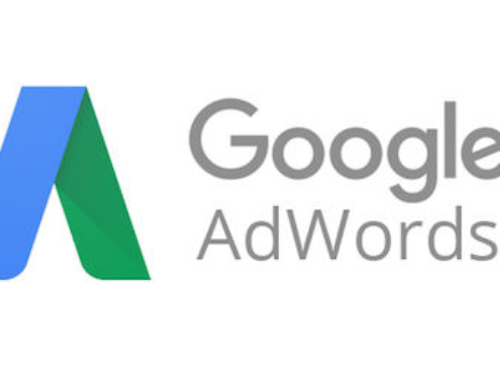As a performance-based digital marketing agency, we firmly believe that paid acquisition campaigns like paid search, display, video ad units and social ad campaigns can be a foundation for a lead or customer acquisition strategy. But the way a paid acquistion campaign and strategy is created and executed is constantly changing. Not because of new and exciting shiny objects, but because the pshychology and behavior of the connected consumer is constantly changing.
What inspired this post for me was the recent release of the 100 Most Expensive Keywords on Google. You can click on the image and take a look at the entire list and what some of the terms are going for on paid search. Let’s just say that it will probably surprise or even shock some of you. But what it also says is that paid search, even with very high costs, works. But it’s likely that paid search does not work the same way it used to.
 Here’s what I mean. There was a time when it was perfectly acceptable to run paid search campaigns to generate traffic to a website. But to be honest, I cannot say that it’s a reasonable strategy to pay a $600, $400 or even $200 CPC to generate website “traffic”. At least, I would hope it’s not.
Here’s what I mean. There was a time when it was perfectly acceptable to run paid search campaigns to generate traffic to a website. But to be honest, I cannot say that it’s a reasonable strategy to pay a $600, $400 or even $200 CPC to generate website “traffic”. At least, I would hope it’s not.
Winning bids like these should be tied to something much more meaningful than a website visitor. Maybe a lead, customer or conversion? But this is where the disconnect begins to become apparent.
Many of the websites we see on a daily basis are still pretty much digital brochures for a business. A source of information for a potential client or customer. But that’s it. These sites are not built with intention or with any sort of funnel that takes an information seeker through a process to becoming a lead or customer.
Funnel you say? Yes, an intentional process built into a website that takes someone by then hand and leads them through their Awareness-Consideration and Decision phases. My business partner has done some posts about this in the past. There’s much more to the process now than simply driving traffic to a website and hoping for the best. At least, not when you’re paying the CPCs needed to get the winning bid. In 2016, you must think about marketing to your customers purchase process. They won’t marry you on the first date.
But this isn’t anything new. The understanding that consumers of all types (B2B and B2C alike) rely on information gathering to educate themselves about a potential purchase has been around for a quite few years. Google first started education businesses about this several years ago when they began promoting the Zero Moment of Truth or ZMOT concept. This has changed somewhat as well as we continue to see the impact of mobile on this pre-purchase information gathering and consideration process. We (Google Partners) now refer to these as mico-moments. And considering that more than half of all searches originate on mobile devices suggests that there’s a whole lot of mico-moments going on. Access to information is always in our pocket so the process of pre-purchase research is a less taxing process for your potential customers.
So What’s Your Funnel?
Here’s the problem we see so often. A potential customer visits your website and they are given one or maybe two options.
- Call you
- Fill out a form to request information
The brutal truth is that most will take the third option. Leave your website without doing anything and continue their search and information gathering. Why? Because you haven’t done anything to build trust and they’re not ready to give  you their information, without an exchange of similar value, and they don’t want to speak to someone that’s going to sell them something. Your website starts to perform more like a leaky bucket than a funnel and it’s getting more and more expensive to fill that bucket.
you their information, without an exchange of similar value, and they don’t want to speak to someone that’s going to sell them something. Your website starts to perform more like a leaky bucket than a funnel and it’s getting more and more expensive to fill that bucket.
Several studies over the past several years support the understanding that a buyer (both B2B and B2C) in a pre-purchase phase is going to be close to the end of their decision making process (up to 70%) before they reveal themselves to a business. The book The Invisible Sale by Tom Martin does a great job of diving deep into the pre-purchase process and reveals how many website visitors that may be potential sales choose to remain anonymous until they’re ready to speak with a company representative. But when these “invisible sales” are not given an option to engage with your site when they’re in the early stages of a purchase consideration (top of funnel), they’re almost forced to move on. In a sense, your website could actually be turning away potential business simply because it’s not been developed or designed to work with a visitors purchase consideration and decision process. It lacks a funnel to move website visitors through.
So How Do You Fix This?
The concept of funnel development and, in turn, conversion optimization, first requires that you begin to view your website as more than a digital brochure that is meant to tell the life story of your business. First and foremost, it needs to assist your potential customer in their process and not just promote your business. Stay focused on helping them solve their problem or meet their need. This will connect with them and begin to build trust.
Next, if you’re using some sort of email marketing (which you should be) and you can offer something that will be of value to them (tip sheet, checklist or other download) while they’re at the top of the funnel and early in their information gathering, you can use this content as something of value in exchange for their email address. Use your email marketing to continue to build trust and walk them through their decision making process with the information that will be helpful along the way. From this point, the strategy can branch out in many different directions depending on your business, but working with a performance-based marketing agency can provide you with the guidance and insights to be successful.
With a well planned and effective funnel, your website visitors have many more options to convert and your cost per click dollars won’t be driving traffic into a leaky bucket.
The LTR Digital Sherpa

 by
by 
